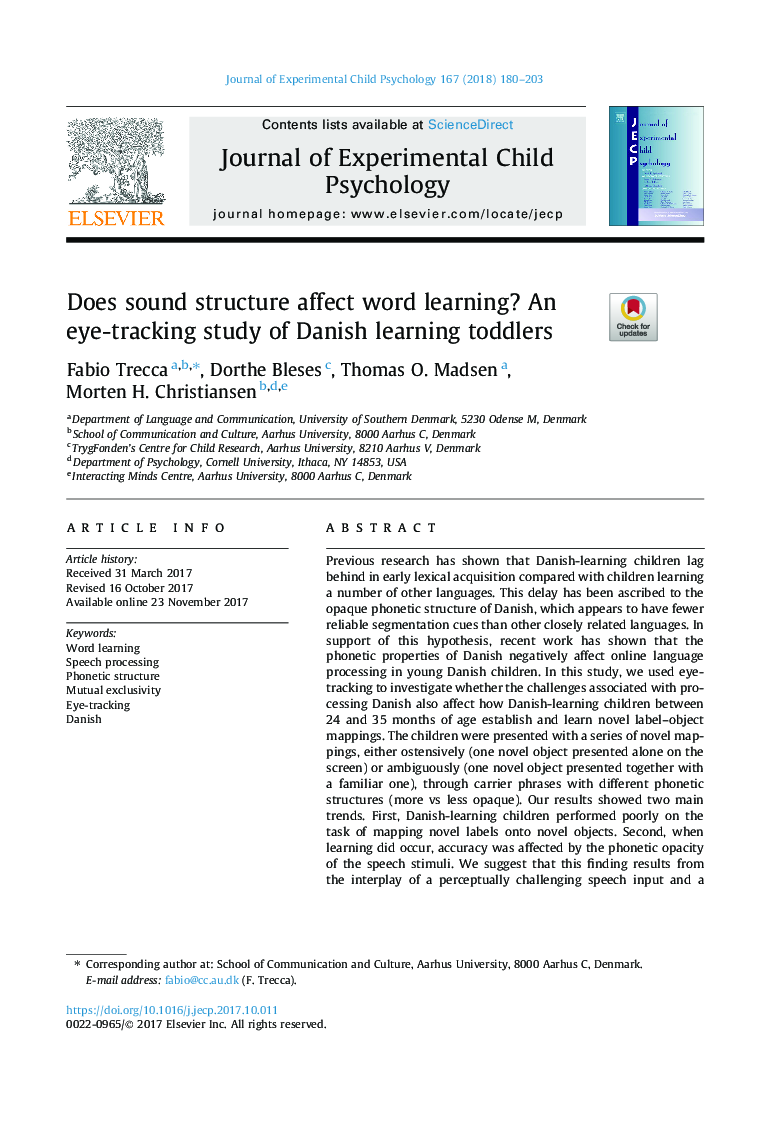| Article ID | Journal | Published Year | Pages | File Type |
|---|---|---|---|---|
| 7274117 | Journal of Experimental Child Psychology | 2018 | 24 Pages |
Abstract
Previous research has shown that Danish-learning children lag behind in early lexical acquisition compared with children learning a number of other languages. This delay has been ascribed to the opaque phonetic structure of Danish, which appears to have fewer reliable segmentation cues than other closely related languages. In support of this hypothesis, recent work has shown that the phonetic properties of Danish negatively affect online language processing in young Danish children. In this study, we used eye-tracking to investigate whether the challenges associated with processing Danish also affect how Danish-learning children between 24 and 35 months of age establish and learn novel label-object mappings. The children were presented with a series of novel mappings, either ostensively (one novel object presented alone on the screen) or ambiguously (one novel object presented together with a familiar one), through carrier phrases with different phonetic structures (more vs less opaque). Our results showed two main trends. First, Danish-learning children performed poorly on the task of mapping novel labels onto novel objects. Second, when learning did occur, accuracy was affected by the phonetic opacity of the speech stimuli. We suggest that this finding results from the interplay of a perceptually challenging speech input and a slower onset of early vocabulary experience, which in turn may delay the onset of word learning skills in Danish-learning children.
Related Topics
Social Sciences and Humanities
Psychology
Developmental and Educational Psychology
Authors
Fabio Trecca, Dorthe Bleses, Thomas O. Madsen, Morten H. Christiansen,
